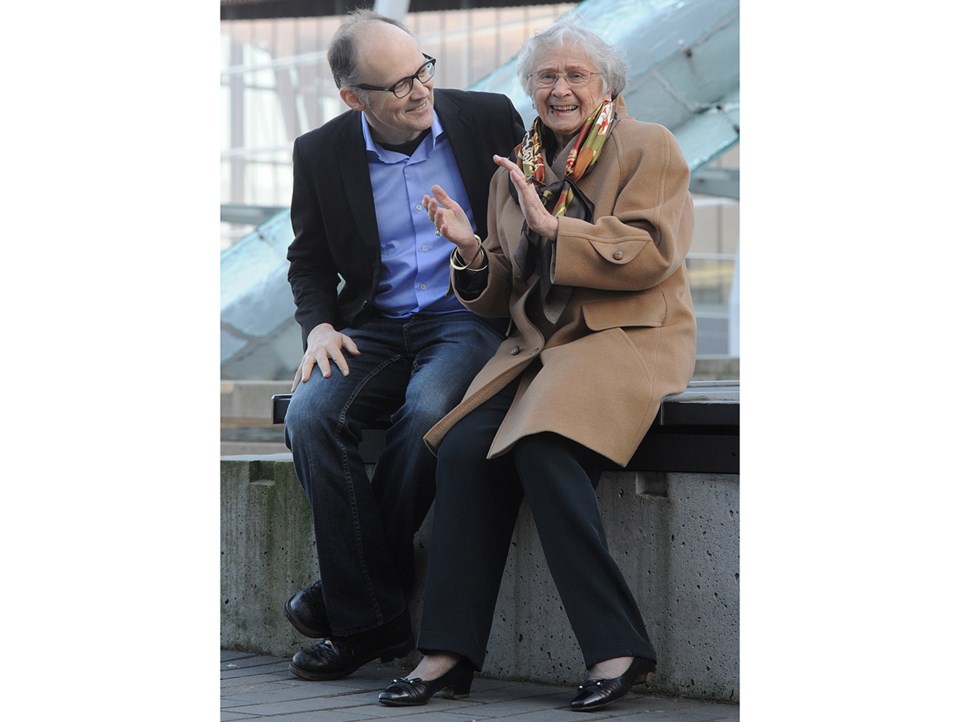Setting 50 records and winning 750 gold medals in track and field is impressive enough, but to continue doing so well into your 90s is quite the feat.
The late nonagenarian track and field athlete Olga Kotelko will be the subject of the upcoming Third Age Learning at Kwantlen (TALK) seminar at Kwantlen Polytechnic University’s Richmond campus on Wednesday, Oct. 14.
Kotelko’s life and research into her health and genes was documented in the book, What Keeps Olga Running: The Mystery of the 90-Something Track Star and What She Can Teach Us About Living Longer, Happier Lives.
North Vancouver-based writer Bruce Grierson spent five years getting to know Kotelko, who agreed to be tested by scientists to understand how she was able to remain active and defy the general conception of aging.
“Her body, for some reason, decided to not age in the normal way that we are all used to,” Grierson said. “She looked and acted so much younger than her real age.”
Grierson first became aware of the fit and record-breaking senior after reading a sport story about her in a North Shore community newspaper about six years ago, developing a close friendship in the process.
Kotelko was born in 1919 in Vonda, Saskatchewan, and was the seventh of 11 children, born to Ukrainian immigrant farmers. She became a teacher and moved to the Vancouver area with her two young children after her marriage broke down.
She retired from teaching in 1984 and being full of energy, decided to take up softball, the only sport she played in her childhood.
After playing for 12 years competitively, she took the leap to track and field and when she hit 90, she became the world’s oldest long jump competitor.
In the process of writing the book, Grierson found that while genetics plays a part in how a person ages, but environment and personal lifestyle choices plays an even larger role.
“The rule of thumb is about 25 to 30 per cent is genes and 70 to 75 per cent is environment,” Grierson said. “It’s much more in the way we live our lives than the genes we inherit.”
Grierson learned one of Kotelko’s secret to remaining physically fit and active into old age was to constantly be moving and avoid a sedentary lifestyle.
“We tend to think that you sit around all day and then burn it up doing 45 minutes of cardio, that will compensate for the day, but it doesn’t,” Kotelko said. “Staying in motion throughout the day is very important.”
Kotelko died in June 2014 from a blood vessel rupture in her brain. However, the book came out in early 2014, which brought international attention to Kotelko. She was interviewed on the Today Show and Dr. Oz in the United States, with many articles published about her in newspapers such as the Globe and Mail, New York Times and The London Telegraph. She was also an inspiration to many.
“She is a hero and a role model,” Grierson said. “When Olga was still around we used to do these presentations together and we traveled around a bit. Now I do it by myself and I try the best I can to bring her back to life in these presentations.”
Tickets to Grierson’s talk is $15 and will be held at Kwantlen in room 2150, from 11 a.m. to 12:50 p.m. For more information, visit kpu.ca/talk.



